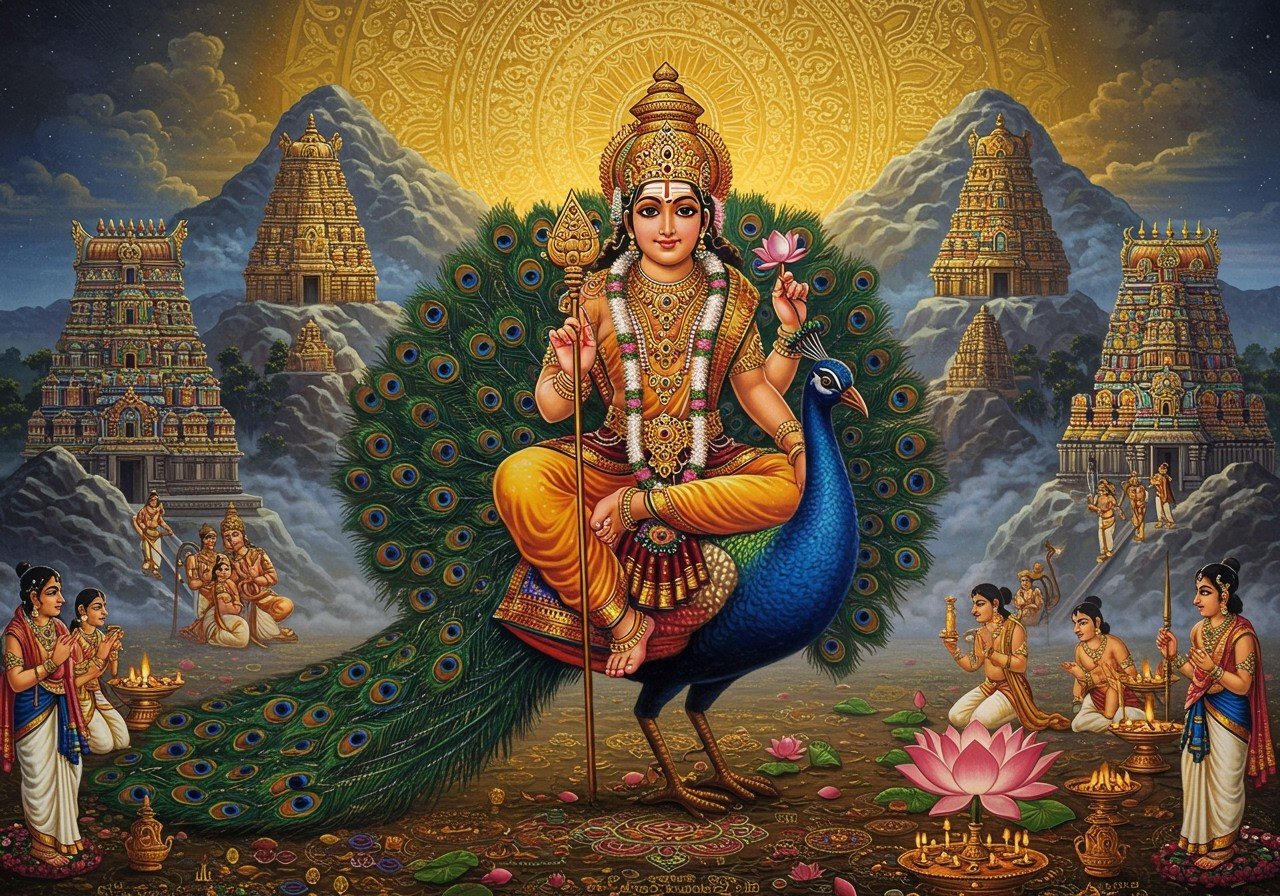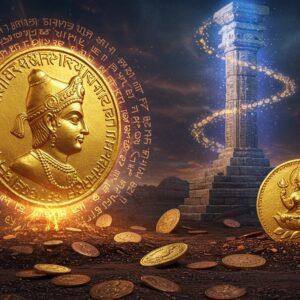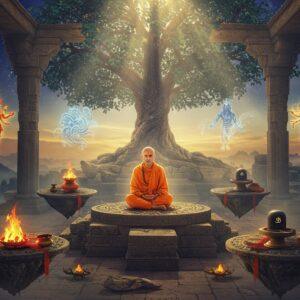
The Tirumurukarruppatai stands as a revered testament to ancient Tamil literature, guiding devotees on a spiritual quest to seek the blessings of Lord Murugan. This timeless piece holds immense cultural and historical significance, deeply woven into the fabric of Tamil traditions and beliefs. By exploring this sacred text, we gain a profound appreciation for its role in shaping Tamil spiritual life and its enduring relevance in the modern world.
Historical Context of Tirumurukarruppatai
Unveiling the Origins
Composed during the flourishing Sangam era (300 BCE to 300 CE), a period marked by vibrant socio-political and religious dynamism in Tamil Nadu, the Tirumurukarruppatai emerged as a beacon of devotion. This era witnessed a surge in literary activities, particularly surrounding Madurai in the ancient Pandya kingdom. The text finds its home within the esteemed Pattuppāṭṭu anthology, a collection of ten exquisite Tamil poetic works. Its author, Nakkiranar, gifted Tamil literature with this masterpiece, solidifying its place among the treasures of ancient wisdom. Understanding this context allows us to grasp the profound significance of Tirumurukarruppatai and its connection to the cultural and spiritual landscape of its time.
Synopsis of Tirumurukarruppatai
A Spiritual Pilgrimage
Tirumurukarruppatai acts as a spiritual guide, leading devotees on a sacred pilgrimage to various abodes of Lord Murugan. It is structured with rich metaphorical and allegorical language, showcasing the poetic elegance of ancient Tamil. Each temple visited in the text symbolizes a different facet of spiritual enlightenment, enriching the devotee’s journey with profound meaning. Through this exploration, we begin to understand the depth of devotion and the exceptional literary artistry woven into the fabric of this sacred text.
The Significance of Tirumurukarruppatai in Tamil Culture
A Legacy of Devotion
Tirumurukarruppatai plays a vital role in Tamil culture, deeply influencing devotional practices, festivals, rituals, and temple traditions. It reinforces Lord Murugan’s revered status as a primary deity, shaping the spiritual landscape of Tamil society. The text serves as a powerful instrument in preserving Tamil heritage, promoting the language and its rich literary traditions. Recognizing its significance allows us to appreciate how Tirumurukarruppatai contributes to sustaining cultural identity and religious practices within the Tamil community.
Tirumurukarruppatai and Modern Relevance
Ancient Wisdom for Modern Times
The impact of Tirumurukarruppatai transcends time, resonating even in contemporary Tamil culture and spirituality. Educational initiatives and cultural programs reignite interest in this ancient literature, ensuring its timeless wisdom continues to inspire. In today’s digital age, the accessibility of the text online facilitates deeper engagement with its teachings. Tirumurukarruppatai serves as a muse for modern poets, writers, and artists, fostering artistic expression and preserving cultural identity in a rapidly changing world. This ongoing relevance speaks volumes about the timeless appeal of ancient wisdom and its power to guide us in the present.
Exploring Ancient Tamil Literature
A Treasure Trove of Wisdom
Sangam literature, a jewel of ancient Tamil culture, takes us on a journey back in time, spanning from 300 BCE to 300 CE. This period radiates with cultural richness and historical depth, reflecting the thriving literary scene, particularly in Madurai within the ancient Pandya kingdom. Let us delve deeper into the fascinating world of Sangam literature, exploring its classification, texts, authors, themes, and enduring legacy.
Classification and Themes
Sangam literature is broadly categorized into akam (inner) and puram (outer). Akam poetry delves into the depths of human emotions, focusing on love and personal experiences. Puram poetry, on the other hand, celebrates heroic deeds, valor in war, and public life. Notably, about three-fourths of Sangam poetry is akam-themed, offering a rich tapestry of human relationships and emotions. Both *akam* and *puram* can be further classified into seven *tinai*, reflecting the landscape in which the poetry is set.
Texts and Structure
The Eighteen Greater Texts (*Patiṉeṇmēlkaṇakku*) form the core of Sangam literature. These texts are further classified into *Ettuttokai* (Eight Anthologies) and *Pattupattu* (Ten Idylls). The *Tolkappiyam*, an ancient Tamil grammar work, also holds a significant place within this literary tradition.
- Ettuttokai encompasses renowned collections like Akananuru (400 love poems) and Purananuru (400 heroic poems), offering a diverse range of poetic expressions. Other works in this anthology include *Kurunthogai* (short love poems) and *Natrinai* (poems set in five landscapes).
- Pattupattu consists of ten idyllic songs, each contributing to the richness and depth of Sangam literature.
- The Tolkappiyam serves as a comprehensive guide to Tamil grammar, phonetics, rhetoric, and poetics. It also explores aspects of human life, habitats, animals, plants, and people.
Authors and Influence
Sangam literature is a testament to the creative genius of 473 poets from diverse backgrounds, including royal families, merchants, farmers, and notably, at least 27 women poets. Around 102 of these poets remain anonymous, adding an air of mystery to this ancient literary landscape. These diverse voices offer invaluable insights into the social fabric and cultural values of ancient Tamil society. Through themes of love, war, ethics, governance, and trade, we gain a deeper understanding of the human condition and the societal norms of the time.
Rediscovery and Significance
While obscured for much of the 2nd millennium CE, Sangam literature was carefully preserved by monasteries near Kumbakonam. In the 19th century, dedicated Tamil scholars, notably Mahamahopadhyaya Dr. U.V. Swaminatha Iyer, rediscovered and compiled these invaluable texts. This rediscovery highlights the enduring power of Sangam literature and its vital role in understanding Tamil history and civilization. It provides a window into the past, offering a glimpse into the lives, beliefs, and artistic expressions of our ancestors.
How Poojn Supports Your Murugan Worship
At poojn.in, we understand the deep reverence for Lord Murugan and the significance of Tirumurukarruppatai in Tamil culture. We offer a curated selection of authentic puja items that resonate with the teachings of this sacred text, helping you connect with your spiritual heritage:
- Pure Brass Vel: Find traditional Vel replicas in various sizes, perfect for your home shrine. Explore our collection of Brass Vel.
- Peacock-Themed Items: Adorn your puja space with decorative items featuring Lord Murugan’s majestic vahana, the peacock.
Discover Peacock-themed items - Copper and Bronze Murti: Bring home beautifully crafted idols of Lord Murugan, created by skilled artisans with utmost devotion.
Find authentic Murti here. - Puja Thali Sets: Simplify your daily worship rituals with our complete puja thali sets, containing all the essentials. Browse our Puja Thali sets.
- Kumkum and Vibhuti: Enhance your puja experience with sacred powders for traditional markings, adding a touch of authenticity to your rituals.
Shop for Kumkum and Vibhuti. - Incense and Deepam: Create a serene atmosphere for your daily aarti with our selection of incense sticks and deepam lamps. Explore our Incense and Deepam collection
Order easily through:
- Website: www.poojn.in
- Phone: 03369029784
- WhatsApp: 9476142738
All our products are sourced with utmost care and come with authenticity certificates, ensuring you receive genuine and high-quality items. We provide secure packaging and pan-India delivery, bringing the sanctity of tradition right to your doorstep. Our dedicated customer service team is always ready to offer guidance on the proper usage and maintenance of your ritual items.
For bulk orders or temple supplies, please contact us directly. We take pride in ensuring the safe and respectful transit of all sacred items.
Embracing the Legacy of Tirumurukarruppatai
Exploring Tirumurukarruppatai and Sangam literature creates a powerful connection to our rich heritage. These ancient texts offer timeless stories and wisdom that resonate deeply within us, reminding us of the enduring values and traditions that shape our cultural identity. By understanding and cherishing these literary treasures, we honor the voices of our ancestors and preserve a legacy that will continue to inspire and guide generations to come. Let us embrace this heritage, blending the wisdom of the past with the convenience of the present.
FAQs on Tirumurukarruppatai: An Ancient Tamil Literature Deep Dive
What is Tirumurukarruppatai?
Tirumurukarruppatai is a revered work of ancient Tamil literature, belonging to the Sangam period. It’s a devotional poem dedicated to Lord Murugan.
Who wrote Tirumurukarruppatai?
Nakkiranar, a prominent poet of the Sangam era, is credited with composing this beautiful piece of literature.
What is the main theme of Tirumurukarruppatai?
The poem’s central theme revolves around praising Lord Murugan and guiding devotees to his sacred temples. It paints a vivid picture of the pilgrimage and the spiritual experiences associated with each temple visit.
Why is Tirumurukarruppatai significant in Tamil culture?
This work holds immense cultural significance as it provides valuable insights into ancient Tamil traditions, beliefs, and the fervent devotion to Lord Murugan. It acts as a window to the spiritual and cultural past.
How does Tirumurukarruppatai contribute to Tamil literature?
With its poetic beauty and profound religious content, Tirumurukarruppatai enriches Tamil literature. It offers a glimpse into the spiritual life of ancient Tamils and stands as a testament to their literary prowess.
Can you provide a brief synopsis of Tirumurukarruppatai?
The poem acts as a spiritual guide, leading devotees to the various sacred abodes of Lord Murugan. It details the journey to each temple and describes the divine experiences encountered along the way.
What makes Tirumurukarruppatai unique among Sangam literature?
Its unique focus on devotion and guidance to Lord Murugan’s devotees sets it apart from other Sangam works. It serves as a spiritual roadmap rather than just a piece of literary art.
Is Tirumurukarruppatai still relevant today?
Absolutely. Its spiritual guidance remains deeply relevant for devotees, and its cultural value as a treasure of Tamil heritage continues to inspire and connect people to their roots.


